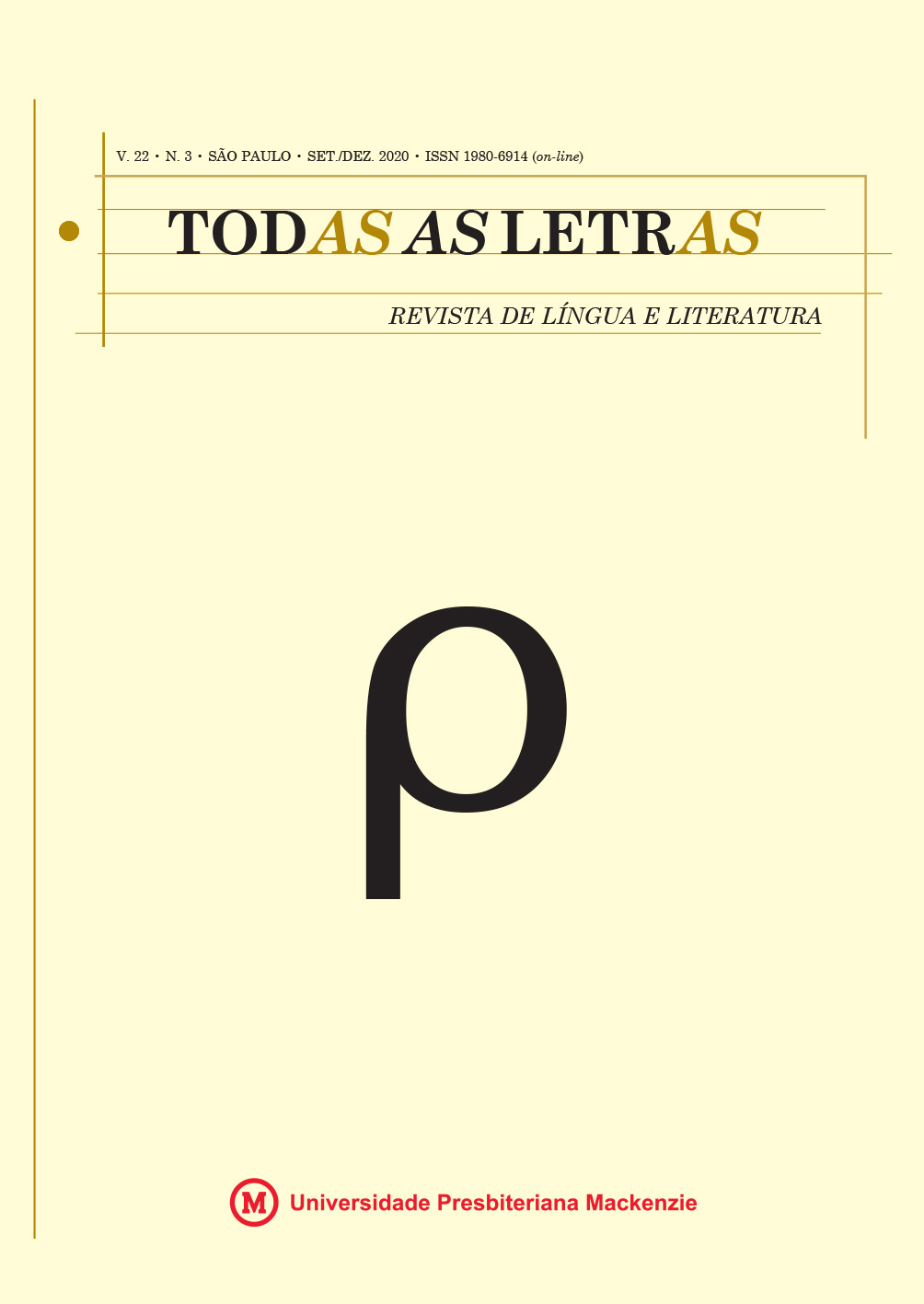Time and space in the self-fiction The confession of Lúcio, by Mário de Sá-Carneiro
Keywords:
Self-fiction. Chronotope. Literature and Other Arts. Image metaphors. Time and space. Sá-CarneiroAbstract
Self-fiction The confession of Lúcio, by Mário de Sá-Carneiro, is a narrative in which the character Lúcio, a Portuguese writer, confesses, after ten years in prison, that he had not committed the crime for which he was paying. Faced with the question of what would be the commitment of the arts in the representation of time and space in the self-fiction of Mário de Sá-Carneiro, this article aims to associate the Bakhtinian chronotope with the mist metaphor, a symbolic form we created to analyze how the writer modernist and sensationalist built sensations, reflections of the characters, and actions from the images provided by the Parisian arts, combining time and space with daydreaming imagery. The methodological reflection will be restricted to the analysis of the moments/dialogues in which the artists talk about themselves, the sensations, and the arts.
Keywords: Self-fiction. Chronotope. Literature and other arts. Imagery metaphors. Time and space.
Downloads
Downloads
Published
How to Cite
Issue
Section
License
The originals accepted and published become property of Mackenzie Presbyterian University, being forbidden their total or partial reproduction without permission of the Editorial Board, except for study and research.




